Totally unplanned, it proved to be one of the more entertaining days of my life. Business had brought me to Burbank California. A friend in the film industry had taken me on a tour of the movie studios and, seeing that one sound stage had activity underway, he brought me in. By sheer luck we would be the only two non-actors ever to see an hysterically funny full cast rehearsal for the wedding dance in the Taxi episode “The marriage of Latka. ”What could possible beat that? Shortly I would find out when my friend introduced me to 92-year old Hollywood dentist and movie car legend, Dr. George Schweiger.
Hollywood dentist Dr. George Schweiger’s fantastic stable of future classic car rentals

Spencer Tracy and Clark Gable “Boomtown” with mud and tire chains
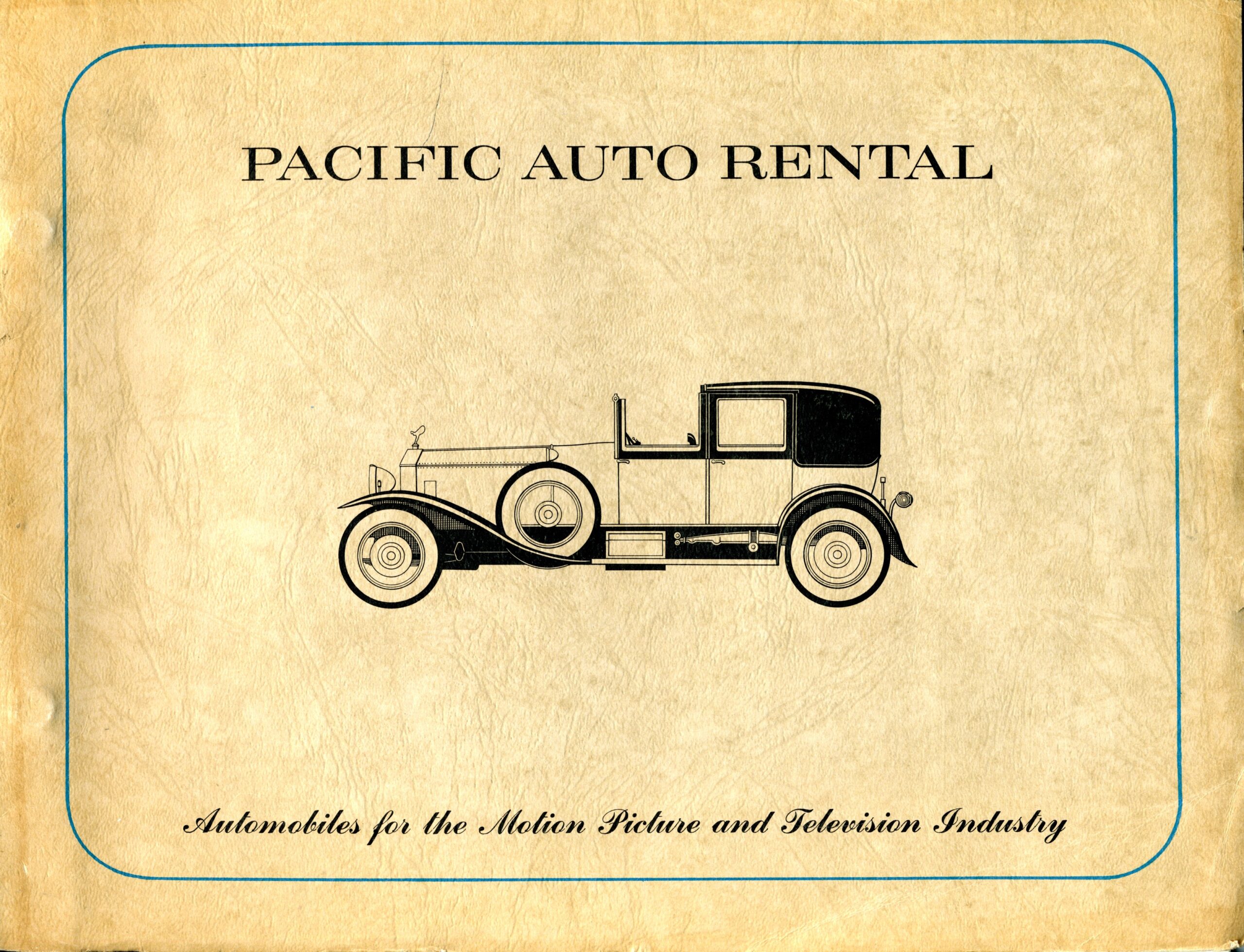
Pacific Auto Rental Catalog
Driving to meet Dr. George Schweiger on a late summer morning in 1982, my friend Bill Wahnish alerted me that the somewhat curmudgeonly good doctor was a man of few words and had never been interviewed. This would be a first. Pulling up in front of an unremarkable but large one-story warehouse with huge sliding doors, Bill informed me that this was but one of three large facilities used to house the roughly 300 vehicles held by Schweiger’s Pacific Auto Rental business.
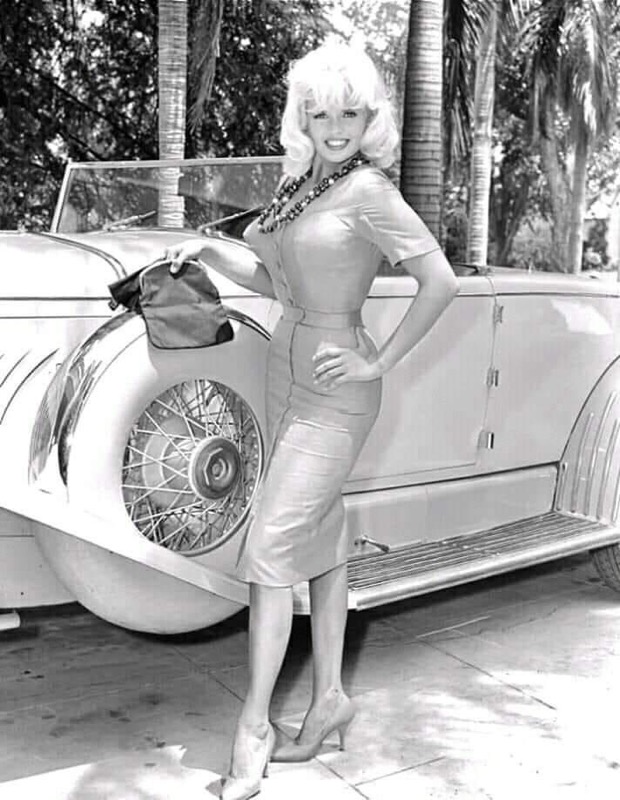
1931 Duesenberg Model J and Jayne Mansfield
A practicing and well-to-do Hollywood dentist in the time of silent films, Dr. George Schweiger possessed a great passion for interesting automobiles. As the 1920s came to a close, Schweiger had amassed a sizeable collection.
When the “Roaring 20s” disintegrated into the deep Depression. Schweiger decided he wanted some amusement in those dark times. His solution called for turning his car collection into a stable of vehicles available as rentals for the Hollywood movie studios. Schweiger’s breathtaking personal museum of future classic cars included numerous Rolls-Royces, Packards, Cadillacs, Mercedes-Benzes, Isotta Fraschinis and Duesenbergs including a 1931 Duesenberg Model J ‘Disappearing Top’ Convertible Coupe by Murphy that in 2015 would sell for $3,520,000.
Schweiger met us out in front of the warehouse. Spry and sharp, sporting suspenders and a dress shirt, Schweiger agreed to speak with me before departing for his usual afternoon tennis match.
Following Schweiger through the entry door, I found myself in a dimly lit cavernous space tightly packed with classic vehicles of all stripes and sizes. High end sedanca devilles of the 1930’s, ‘40s and ‘50s on trickle chargers lined the length of one wall. A far corner was thick with late ‘30s and ‘40s trucks, some military, others commercial canvas top 5-ton stake jobs, the kind seen careening down a dark road in chase scenes from 1940s and ’50s serial adventures.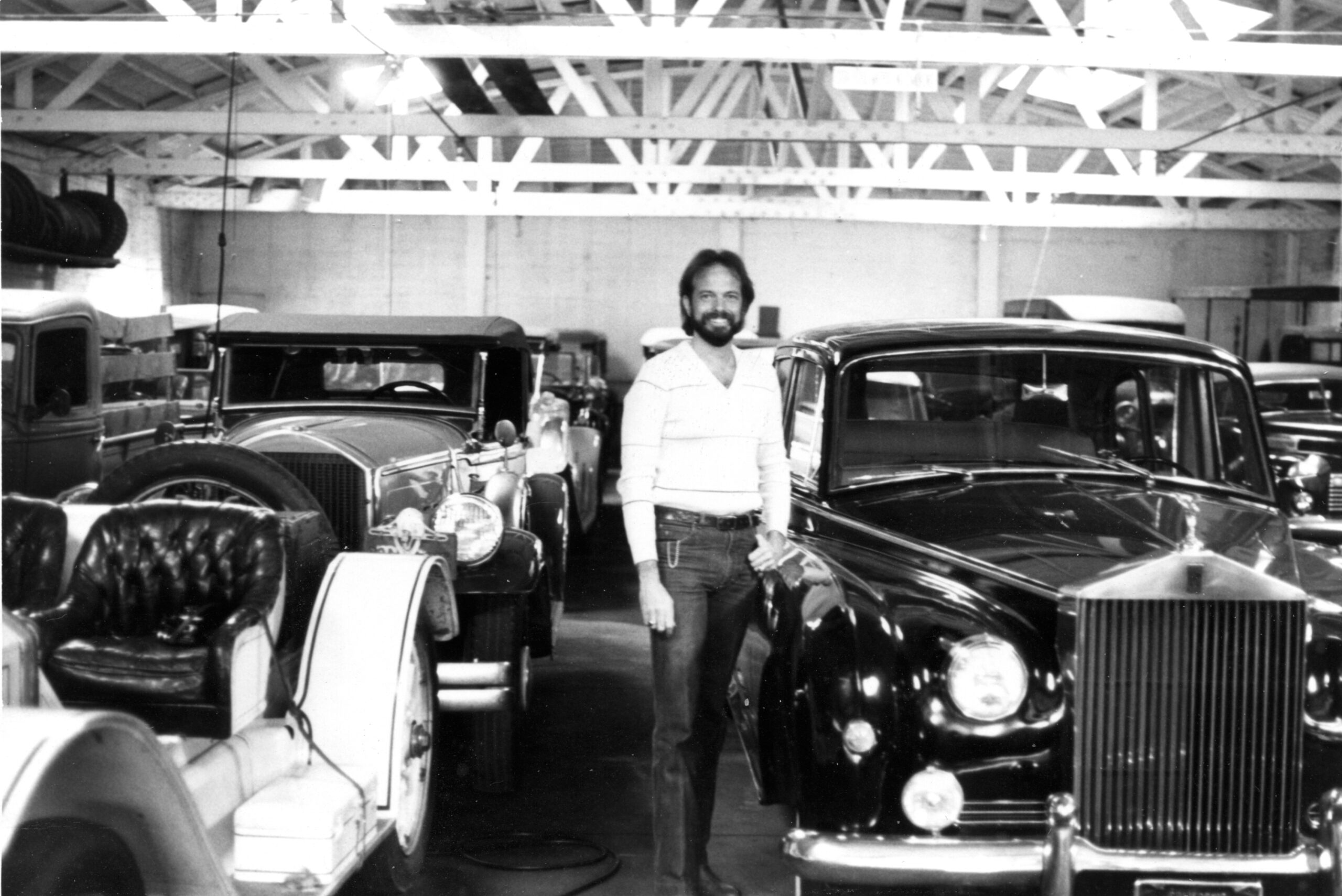
Against a back wall resided a 1924 Model T taxi that frequently appeared with Laurel and Hardy. Stationed to its immediate right sat a 1922 Maxwell made famous by comedian Jack Benny and his chauffer Rochester. Menacingly stern and next in line, was a 1939 dual-wheel Mercedes-Benz staff car custom built for Nazi general Erwin Rommel and bought by Schweiger in 1950. It would later be made famous on “Hogan’s Heros.” Most conspicuously and proudly displayed in the center of the warehouse floor were the Duesenbergs. Dominant in their presence and perfection, this proud assemblage of American automotive royalty included the future multimillion dollar 1931 Model J Convertible Coupe.
 Our conversation would be held in Schweiger’s office. Directed to my left, we approached a classic glass pane and metal panel factory floor office. It displayed all the patina one would expect after spending over forty plus years in a vintage vehicle storage facility. Pacific Auto Rental had moved there in 1940. During that time Schweiger’s original partner had passed away in 1943. Shockingly for Schweiger, his sixty-year old son predeceased him some years back and forced the doctor to resume control of the business. Considering the impressive size of his collection, the minimal nature of the Pacific Auto Rental support staff came as a shock. It consisted solely of a postman who worked part time and a young man with learning disabilities. Everything else was left to the studio renting the vehicle and specialists on the other end of a phone call.
Our conversation would be held in Schweiger’s office. Directed to my left, we approached a classic glass pane and metal panel factory floor office. It displayed all the patina one would expect after spending over forty plus years in a vintage vehicle storage facility. Pacific Auto Rental had moved there in 1940. During that time Schweiger’s original partner had passed away in 1943. Shockingly for Schweiger, his sixty-year old son predeceased him some years back and forced the doctor to resume control of the business. Considering the impressive size of his collection, the minimal nature of the Pacific Auto Rental support staff came as a shock. It consisted solely of a postman who worked part time and a young man with learning disabilities. Everything else was left to the studio renting the vehicle and specialists on the other end of a phone call.
Reticent to say much at first, Schweiger initially deflected questions saying that he could not remember much. However, with a little encouragement, recollections began to flow with greater speed and amazing accuracy.
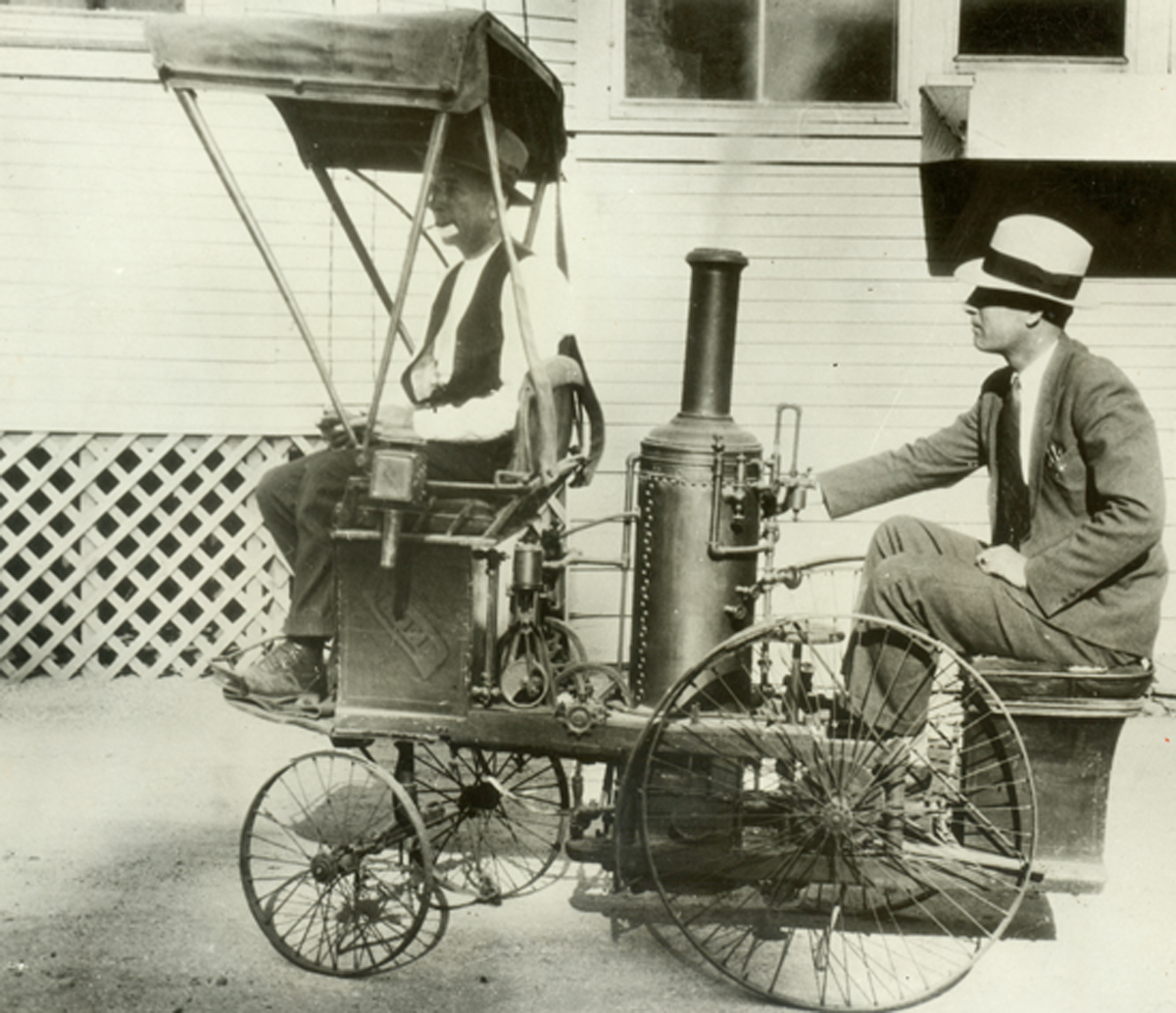
Philion Steamer
Schweiger first recalled his good friend and favorite trading partner Bill Harrah who passed in 1978. Owner of Harrah’s Hotel and Casinos, one of the most influential figures in gaming history and at one point the owner of the largest collection of classic vehicles under one roof, Harrah and Schweiger had a great relationship. Harrah’s favorite motorized possession, a Philion Steamer came in a trade with Schweiger. Harrah loved the little steamer. Built in the late 1890s by French circus showman Achille Philion, the coal burning steamer successfully served to call attention to Philion when he paraded it down main streets of America to announce that the circus had come to town.
Schweiger rolled right into the backstory of Samuel Goldwyn of Metro-Goldwyn-Mayer renown. As Schweiger starts the story, Samuel Goldfish has not yet changed his name to Goldwyn. A Polish immigrant, Goldfish in 1909 started out in Manhattan as the owner of a long and narrow novelty store. With the movies entering popular culture as a new form of entertainment, venues to show films were in great demand. Goldfish’s long narrow storefront suited the need perfectly. Within a few years Goldfish had progressed into movie making by entering into a partnership with the Selwyn brothers, Archibald and Edgar. To name their partnership they chose to combine their last names. Goldfish liked the name Gold-wyn so much so that he legally adopted it as his own. It also seemed a far more appealing combination than Sel-fish.
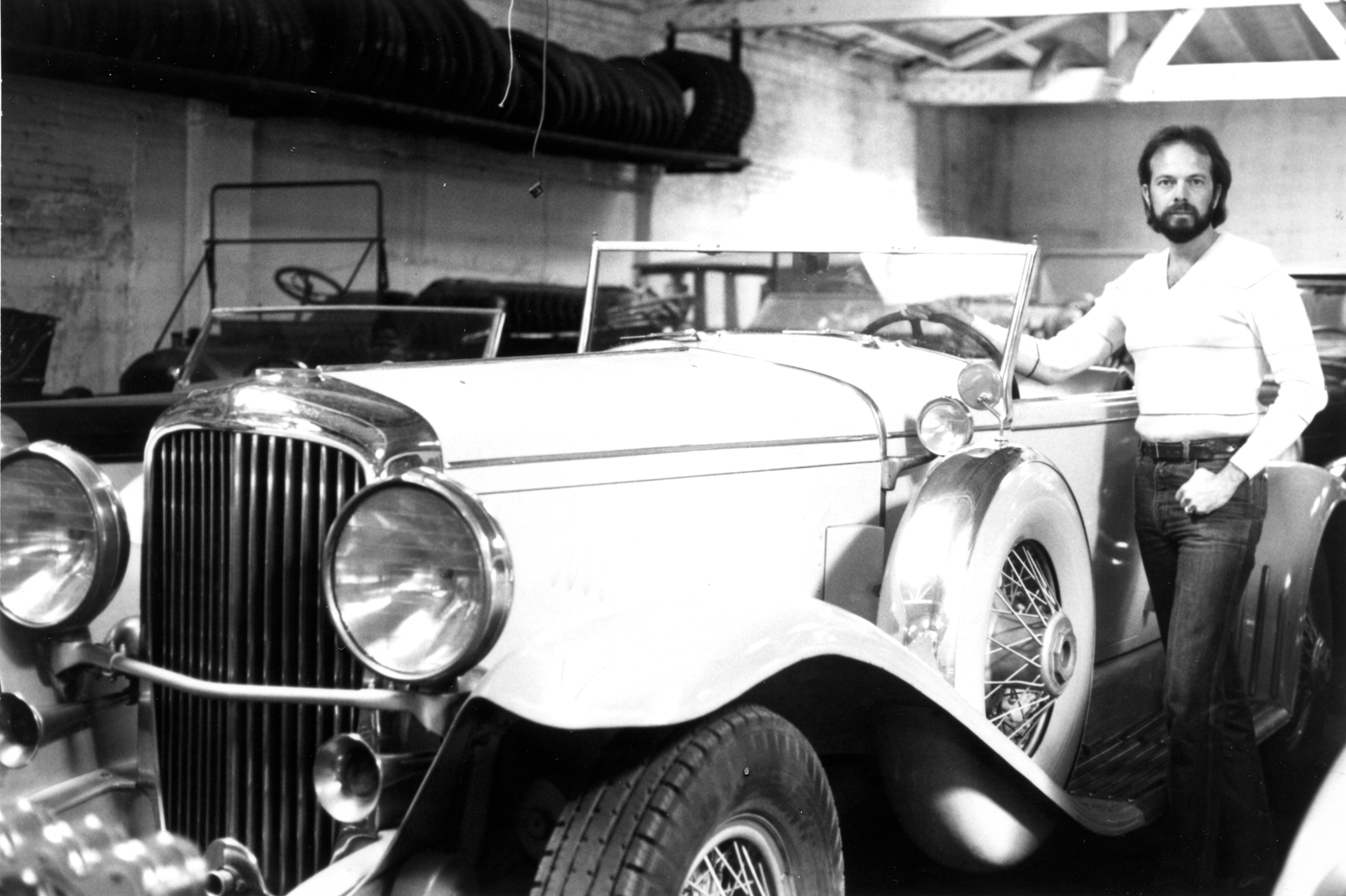
1931 Duesenberg Model J
As Gary Cooper’s mother lived on the same block as Schweiger, Cooper became a close friend and would stop by Pacific Auto Rental at times with his Duesenberg SSJ, the same Duesenberg SSJ that in 2018 would be sold by Miles Collier for $22 million. Hollywood’s A-list members possessing a love for Olympian automobiles apparently found Schweiger a kindred spirit and would visit Pacific Auto Rental to sell a car or just to hang out. Clark Gable, Carole Lombard, Tyrone Power and others would casually while away time in Schweiger’s little factory floor office. Years later a 20-something Elke Sommer would stop by to sell her 1957 Rolls-Royce.
A smile flashed across Schweiger’s face as his experiences on the set of the 1930’s Spencer Tracy and Clark Gable movie “Boomtown” came to mind. He recollected the heavy rains and deep mud that required putting tire chains on all 50 of his cars being used in the filming. He laughed in recalling how he crawled around in the deep mud affixing the chains so filming could proceed.
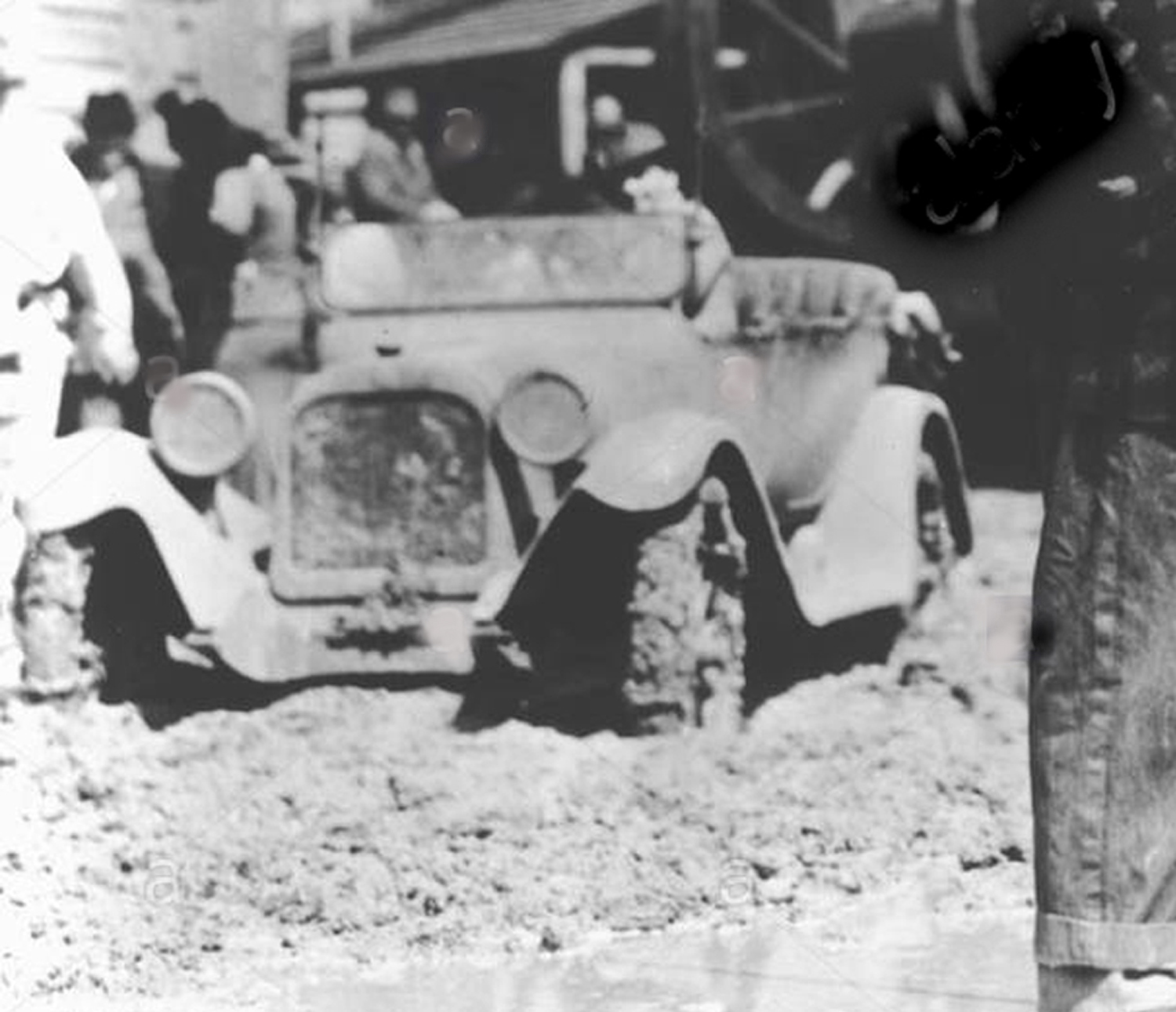
Rental car with chains
Schweiger, now fully engaged with his past, brought to life a wonderful freewheeling first person journey through the history of early Hollywood seen through the windshields of iconic vehicles that appeared in films America loved. Then, the clock struck twelve, literally and figuratively. I realized that time had melted away leaving me painfully close to missing my return flight home.
With many thanks, smiles and handshakes, I promised to continue the interview in the future. Back home I sent out query letters to a variety of magazines. A few months passed until one day when four related letters arrived coincidentally. Three of the letters were responses to my magazine queries and expressed interest in the story of Dr. Schweiger and Pacific Auto Rental. The fourth letter came from my friend Bill. The single sheet of paper read, “Doc passed away. Thought you would want to know.” It would appear I had the honor of benefiting from the only personal recounting of Dr. George Schweiger’s remarkable Hollywood history.
I had been told that Schweiger’s only relative, a niece, possessed absolutely no interest in his collection other than its value. A few months later I learned that the physical assets of Pacific Auto Rental had been sold to the Imperial Palace in Las Vegas.
That said, I retained Schweiger’s priceless recollections. Some shared here with you.

Wow…. and…. WOW! I love reading these historical pieces. It’s a shame Doc’s collection was liquidated, but I guess the old saying still rings true- “All good things must come to an end.” Great story Burton.
Thanks for the comments Tom. I was truly fortunate to have the opportunity to view the Hollywood of almost a century ago from a man who a part of it all.
Transports the reader to magical place and time.
A great compliment because nobody appreciates magical places more than you.
This is epic, Burton. You experienced a genuine slice of Hollywood royalty. Beautifully told, as always.
It really provided a unique opportunity to take a ride on a Hollywood time machine.
Burton, This is the best Drivin’news’so far. A piece of auto history shared with friends with a little interest in cars and friends who love these cars. Your luck in interviewing Doc just before his death was also amazing and sharing it is our lucky day.
If there is more to share about this interview, I would love to read it. Also how many of the magazines who reached out to you actually published your article.? Bobbie
Actually once I learned of Dr. Schweiger’s passing I closed the book on the story until now. This is the first time the story has been told.
Great story, Burton. I recently watched the movie “Mank” about 1930-40’s Hollywood writer Herman Mankiewicz. Filmed in black & white with many beautiful cars of that era … could some of them been cars you saw in Dr. Schweiger’s warehouse? I like to think so.
Thank you. The films of the mid-20th century Mankiewicz scripted would surely have had cars from Pacific Auto Rental. Films shot today maybe a few. But not the real special ones.